
|   |

|   |
 e-mail: sunilkothari1933@gmail.com Sangeet Natak Akademi awardees' festival Photos: Avinash Pasricha January 28, 2018 Sangeet Natak Akademi organized the SNA Awardees' Festival at Meghdoot Theatre, Delhi, from 18th till 21st January. Generally once the President of India gives the date for award ceremony, SNA books various venues well in advance to mount the awardees festival of music, dance, drama, puppetry, folk dance and music, and also of other related arts. This time since there was a delay, the Kamani Hall was not available, so SNA had to accommodate the main performances at Meghdoot 3 theatre. I missed the first day performances of Kathak by Jitendra Maharaj, Kathakali by Kalamandalam Ramachandran Unnithan and Manipuri by Maisnam Kamini Kumar. I also missed performance of Yakshagana as it clashed with another performance. But next day I could see five major performances by the awardees at Meghdoot theatre. It seemed a marathon event as it started at 5pm and concluded by 10pm. One had to go to the theatre by 4.30pm to get a good seat as the crowds were swelling on account of many disciples of the awardees.  Anita Ratnam Anita Ratnam, SNA awardee for Contemporary Dance, is a multi-talented dancer. Trained in Bharatanatyam by Rajee Narayan and Adyar K Lakshman, she received her Post Graduate Diploma from Kalakshetra. She studied Mohiniattam under Chinnammu Ammal and Kathakali under Kalamandalam Balasubramaniam Warrier, physical theatre at Koothu-P-Pattarai and American Theatre at The University of New Orleans, USA. Over the years she developed her Neo-Bharatam dance technique and created several solo contemporary works like Prism, Avani, A Million Sitas, Ma3ka, Vaitharani and Seven Graces. These works have been informed by using tools of Bharatanatyam, theatre and other vocabularies of the Indian performing tradition. This background is important as there are few contemporary dancers from South India whose works are seen in Delhi. Anita in her production Stone-Ahalya has interpreted the mythological character extending the canvas to reflect the contemporary struggle of women globally. Inspired by the iconic American Modern dancer Martha Graham's use of stretched cloth for her 1930 choreographic piece Lamentations, Anita slowly enacted the story with spoken words: 'For the one moment of love, Ahalya was punished with a curse and lifetime spent as a stone, while the philandering god Indra who seduced her, escapes. Ahalya did not have a choice in how she was born and who she married. She was one who lived like a stone with a stone!' Using this as a take off point within 3 scenes, in duration of 30 minutes Anita contemporizes the riveting solo to become a palette for resistance. In Anita's own words, "If Michelangelo could release the iconic statue of David from within the block of marble, Sage Gautama reversed the process by imprisoning Ahalya into stone. Rather than comparing this to Graham's Lamentations," Anita adds, "this Ahalya is a protest and not a lament." Ahalya - obedient, flawless, golden, wise but completely ignored. Indra disguised as Gautama ravished her, knowing that Gautama cursed her to be a stone, with a caveat that when Lord Rama would touch her by his feet, she would regain her life. The issue Anita raises is of women who suffer at the hands of men for no fault of theirs. Or what if the body too has hunger? As a rebel, a woman has to rise and become a hero. Slowly from the crevice of the golden sheath, Anita peers, using her eyes dramatically and finally shakes off the sheath. Not of Martha Graham's Lamentations but a woman ready and able for the fight ahead. When Anita/Ahalya stands tall and finally reveals herself, it becomes a remarkable visual. The choreography looked natural and organic, the slowness deliberate and the space contained and condensed. The final effect was hypnotic and impactful. Anita has used projections with slides of statements that resonate with the women's protest against US President Trump. With phrases like # I will not be silent, #She needed a Hero ,so she became one, # Me Too, she brings the production to the here and now, a contemporary prism where women are speaking out against predators and resisting victimization. Ahalya's dilemma is placed against the larger women's movement. Ideas of entrapment, restriction, constriction and control are explored and the golden stretch sheath becomes several things all at once. Credit for this latest solo is once again the collaborative process of a 22 year old relationship between Anita and Toronto based choreographer Hari Krishnan and visual/costume designer Rex. Local support in design and lighting were provided by Sandhya Raman and Milind Srivastav. 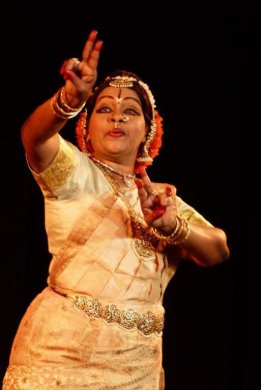 Bala Kondala Rao 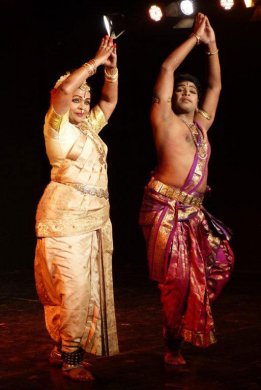 Bala Kondala Rao with Aditya Kuchipudi awardee Bala Kondala Rao from Visakhapatnam, a senior disciple of Vempati Chinna Satyam, presented along with her son Aditya, Tyagaraja's Pancharatna kriti "Endaro Mahanubhavulu" dwelling upon the bhakti element. Bowing to all great saints, they performed in Vempati's bani in perfect sync. There was the usual lilt and joyous gait, complete articulation of movements, with correct adagulus devised by Vempati which has made it his distinct bani. Aditya performs with lot of vigour, whereas Bala becoming of her age, performed with exquisite grace. The number was evocative of the mood of devotion. It was in excerpt of Rukmini Kalyanam that Bala showed her prowess both in abhinaya and nritta. SV Bhujangarao's lyric 'agaru dhup' has become most popular both in terms of the simile and delicate movements. Like the rising smoke of agaru, Rukmini speaks of her love for Lord Krishna. Her state of mind finds anxiety after her engagement with another prince. She begs of Krishna to take her away and writes a letter suggesting that when she is at the temple for puja, he should come there and take her away. Composing the letter she is overcome with emotion and sheds tears. After receiving her letter, Krishna arrives in a chariot and takes Rukmini away. Aditya as Krishna coming in a chariot created illusion of marching and taking away Rukmini. The choreography of Vempati has excellent dramatic power which communicates with audience immediately. Bala's expressions were moving and dignified. The third number was Duraiswamy Pillai's composition on dance of Shiva. Vempati has artistically incorporated Navarasa, as Parvati watches Shiva dancing and relating incidents to each sentiment. Together Bala and Aditya performed suggesting vigor for Shiva Tandava, and lasya for delicate dance of Parvati. The juxtaposition was artistic highlighting both elements. Aditya and Bala acquitted themselves well, faithfully revealing the grandeur of Vempati's Kuchipudi bani. The musicians comprised of family members. Bala's elder son Anand played mridangam and daughter-in-law Amukta Malyada conducted the nattuvangam. Sudharani rendered vocal in a melodious voice and other local artists on violin Raghavendra Prasath and Rajat Prasanna on flute, gave competent support. 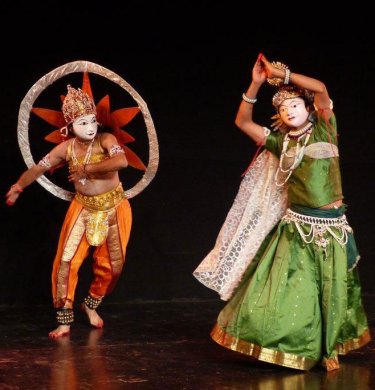 Gopal Prasad Dubey's group (Chandrabhaga and Suryadeva)  Gopal Prasad Dubey's group (Hara Parvati) Gopal Prasad Dubey, the awardee for Seraikella Chhau, has been active on the scene promoting Seraikella Chhau dances for past several years. Trained by legendary Kedarnath Sahoo, Rajkumar Singhdeo, and Natashekhar Banbihari Pattanayak, he runs his Trinetra Chhau Dance Centre in Seraikella. After the rendering of the traditional Jatraghat, the artist presented traditional numbers beginning with aarati offering prayer with a bell and a small lamp. Covered with exquisite buff colour mask, which wore a gentle devotional expression, the dancer danced gracefully evoking devotional mood. The ufli, the basic footwork with bodily movements were in keeping with time tested Seraikella vocabulary. The piece de resistance was the choreographic work Chandrabhaga. The princess frolicking on the river bank is seen by Suryadeva and is smitten by her beauty. He makes advances to her, but Chandrabhaga avoids him. When Suryadeva persists in pursuing her, Chandrabhaga commits suicide by jumping into the river and Suryadeva is heartbroken and repents. This folk tale is popular in the region of Konark temple. The artistic beauty of the masked form comes to light when with elaborate circular ornament on his back Suryadeva with one hand on his heart bends and expresses agony. Chandrabhaga dressed in resplendent royal costumes, with two arms avoiding advances of Suryadeva and her mask almost wears expression of pain. Danced to the tune of only shehanai and drums, the story acquires pathos minus any sung text. The duet was well performed. Dhivar, fisherman with dark mask, luminescent eyes and costume appropriate for fisherman with a net in his hand, going to river to catch the fish had easy communicative power. The movements of rippling water, looking for swimming fish were danced gracefully. When the net was cast the music gained gradual progression. Simple life, common people as subject were in contrast to regal former duet. In Hara Parvati the costumes of Shiva and Parvati were symbolic of the divine couple with masks that evoked shringara, erotic mood. However the duet was performed with dignity evoking feeling of love between the Lord and his consort. The various ufli and topka, the vocabulary of Chhau emphasized its distinct characteristic. The troupe consisted of dancers and musicians - Parasnath Pathal, Pradeep Kumar Basu, Chandan Kabi, Sunil Kumar Dubey, Debraj Dubey, Bijay Kumar Dubey, Tarun Kumar Bhol, Sudhanshu Shekhar Pani, Baburam Saedar, Anand Mukti. Since the artists performed with mask, it was difficult to identify the artists. In the end when honours were done, Gopal Prasad Dubey should have introduced them holding their respective masks. Seraikella dances from Seraikella village are rarely seen and therefore it is important that the artists receive due recognition. 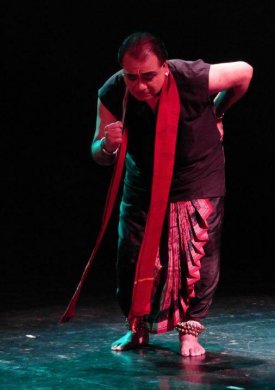 Ratikant Mohapatra as Shabari 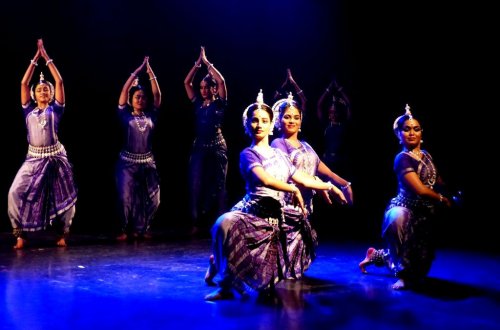 Srjan ensemble Ratikant Mohapatra, the son of Guru Kelucharan Mohapatra, recipient of the Akademi award for his contribution to Odissi, displayed a very high standard of training, sense of choreography, with excellent lighting by Debiprasad Mishra, uniform technique by the female dancers and his own impersonation of Shabari, the devotee who awaits Lord Rama. Ratikant's choreography of Ardhanarishwara to the shloka of Shankaracharya found a felicitous expression. The music by Raghunath Panigrahi has timeless beauty. Rupak Parida'a singing highlighted the original music. But what was mesmerizing was the use of eight female dancers enacting various aspects of Lord Shiva and Parvati in their ardhanarishwara form. Two dancers stand one behind another suggesting ardhanari and the others dance in various permutations and combinations with eye catching patterns, highlighting the iconic beauty of the divine couple. With champak flowers, golden ornaments Parvati shining in glory, Shiva with ashes, Parvati in silken robes, Shiva with vyghracharm, bejewelled earrings of Parvati, serpents as ornaments for Shiva's ears, for ankle bells and so on, the choreography revelled in creating breathtaking images. Ratikant's grasp of space, creating forms, making dancers move in various directions, and alternating between other dancers to play the divine couple spoke volumes for his experience and imagination. His own playing on pakhavaj over which he has excellent command adds to the rhythmic patterns and sound texture. The configuration of elements of tala, laya, movement, the intrinsic sculptural quality of Odissi, the body bends, noteworthy movements, for instance, of parshva mardala and perfect synchronization made the Ardhanarishwara memorable. One has seen it performed as a solo in choreography by Kelubabu, and also as duet, but to see it in a group number by eight dancers was absolutely captivating. The costumes and lighting had overall seamless beauty. In his solo impersonation, Ratikant enacted the character of Shabari, advanced in age, with bent body, looking for Lord Rama's arrival. The libretto from Ramcharitamanas was communicative evoking Shabari's state of mind. Her joy on seeing Rama and Lakshmana arriving was conveyed well by Ratikant. But most moving was Shabari's offering the fruits after testing, 'juthe bor' to Lord Rama. Ratikant's complete identification with role of Shabari was powerful and when the lord leaves, Shabari sheds tears of joy for having had his darshan; one could see Ratikant shedding tears! He excelled in abhinaya doing his legendary father proud. The group of eight young female dancers consisted of Rajashri Praharaj, Aiswariya Singhdev, Sipra Swain, Ritu Sengupta, Riyanka Chakrabarty, Pragna Paramita Das, Maya Krishnamurty, Ribdheeta Barua. Their uniform training in Odissi, perfect movements and synchronization were praiseworthy. Though the music was recorded, the high standard of music stood out. As one would like to say, when receiving the SNA Award, the artists put their best foot forward.  Geeta
Chandran
The finale was by SNA awardee for Bharatanatyam, the celebrated Geeta Chandran. Trained by legendary Swarna Saraswati and by eminent gurus K.N. Dakshinamurty, Jamuna Krishnan and Kalanidhi Narayanan, Geeta is also a Carnatic vocalist that adds welcome quality to her dancing. She chose Shankaracharya's Panchakshara stotra Sivastuti extolling each first word of Om Namah Shivaya. The symbolic iconographic interpretation and dance visualization was characteristic of high aesthetic. Kuttanimata shloka further enhanced the literary and iconographic glory. Her postures of Lord Shiva in its multifold forms were chiselled and evocative of beauty of divine persona. The most moving piece of abhinaya was "Mogaduchi," padam she had learnt from Swarna Saraswati. Married in childhood, when she grows up, the wedded husband comes to take her away. She tells her beloved Krishna with whom she had played games as a child that she will never forget him. She explains that though thousand miles away is sun, the lotus looks at him and blooms, the distance does not matter. Similarly her love for him will always remain intact. The pleadings were heart wrenching and even when the wedded husband beckoned her to hurry up, the nayika looks backwards to Krishna and at final parting, gently removes the tears! Geeta had the rasas at her beck and call. The concluding number with joyous Radharaman singing saw Geeta in her element conveying the joy of merging with divine. The marvellous singing by Sudha Raghuraman highlighted the performance. The nattuvangam by S.Sankar and Sharanya Chandran, flute by G. Raghuraman, mridangam by Manohar Balachandran, violin by Raghavendra Prasath and commentary by Rajiv Chandran had the customary finesse. One wished the curating of classical dances was done with careful consideration in order to avoid presenting major forms in one day. As mentioned earlier, it was like a marathon presentation from 5pm till 10pm. Next day only two forms, Manipuri Nata Sankirtan and Sattriya were presented. That left the third presentation of Down Memory Lane conversation between this writer and Geeta Chandran with almost no time. The audience for last day of dance was meager. The dance forms should have been selected interspersing group dances with solo forms. Since Meghdoot 3 has a very limited capacity, the overcrowding on Day One was also a big problem. 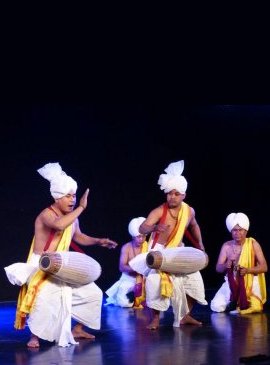
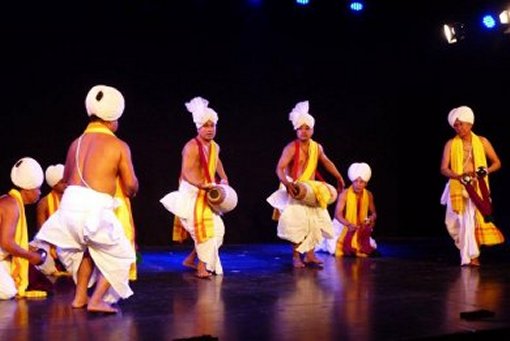
Shyamchand Singh and troupe in Nata Sankirtan
On penultimate session Nata Sankirtan by SNA awardee Ningthoujam
Shyamchand Singh, well known Nata Sankritan artist, known for writing
also several books such as Nata Sankirtan Sheihou, Ratha Jatra
Kang, Chingwagi Wari Amasung Seishak and Sankirtan Parampara, presented
Nata Sankirtan with his troupe. It transported one to the ambience of a
religious ceremony one witnesses in Manipur. Nata Sankirtan is always
presented before Rasalilas. Two pung players and six Kartal cholom
players all dressed in spotless white dhotis and pugrees perform
reciting Gaur Lila. The pung players play pung and perform with
exquisite grace, taking rounds and playing complex rhythms. The Kartal
cholom players led by Shyamchand Singh move in circle, playing kartal in
the beginning in slow tempo and gradually rising to crescendo. Their
graceful gaits reminding us of the gaits of animals embellish the
movements. Rendered in typical Manipuri style of music and using Meitei
songs, the devotional mood pervades the atmosphere. After a while the
two pung players perform in a state of frenzy and while performing their
pugrees fall off on floor in perfect sync. Their exuberance, the zest
and energy are amazing and evoke admiration. Various choreography
patterns are woven in their circular movements, while playing with
kartals. Among them one young performer 'duhar' with a strange name of
Irom James Bond Singh had excellent grace and danced with joyous
abandon, winning rounds of applause. The group consisted of for Pala section - Thokchom Ritakumar Singh, Atanu Dutt, Yaikhom Mangkem, Moirangthem Nilabir Singh, and Khongpangba. The supporting singer was Tekhellambam Nanaotomba Singh. For Pungyeiba section, the lead drummer was Thounaojam Rameshwor Singh Tunginba, whereas Irom James Bond Singh was supporting drummer, Duhar. The performance received enthusiastic response from the audience, in particular for the zestful pung playing. 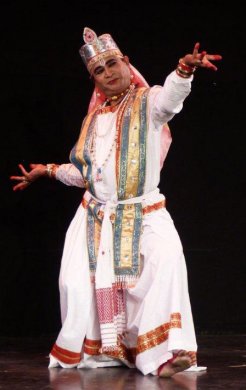 Hari Charan Bhuyan 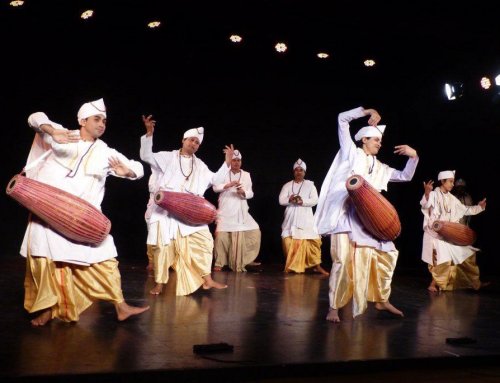 Hari Charan Bhuyan and group From Natun Kamalabari, Sattriya exponent Hari Charan Bhuyan Borbayan, a dedicated Vaishnav has received training in Sattriya from Debanand Borbayan, Thageswar Bayan, Santiram Gayan, Moniram Pathok and Nagen Gayan. A versatile dancer, teacher and musician, Hari Charan has made a name as a leading Sattriya dancer. The troupe consisted of Kamala Kant Bhuyan Borbayan, Lakhiram Bhuyan, Bijaykrishna Bhuyan, Ranjan Borah, Atul Bhuyan, Upen Bharali, Papul Saikia, Prafull Boruah, Hemanta Bharali, Mahendra Khound, Kesab Saikia, Nabin Borah, Subhash Hazarika and Digant Borah. All dressed in white jama, white pugrees, but yellow scarves and silken dhotis created an impressive procession when they performed gayan bayan, dhemali, drum dancing. Srimant Sankaradeva's prayers resounded in the auditorium at once establishing the religious, devotional mood. Following the Manipuri Nata Sankirtan, the devotional mood was further enhanced. The drummers sat in front and executed various patterns playing on drum, behind them stood the cymbal players accompanying them. The entire ensemble looked visually very impressive. The drummers while playing upon drums also executed various hand gestures. They also formed group, two drummers holding one end of each drum and the drummer standing and performing on the two ends in front of him. These sequences won rounds of applause. While dancing and taking aerial rounds, circular movements, bhramaris, drummers continued to perform playing on drum. Though apparently it seemed like pung players of Imphal, their movements and playing, sound textures, rhythmic bols, mnemonic syllables differ from that of Manipuri pung playing. There are less of acrobatic movements in Sattriya than in Manipuri. The solo performance to the Sanskrit shloka extolling the virtues of the Lord found felicitous expressions for several epithets like Mahesham varadam vande, Raghukula, kamalaprakashaka, Darpabhavabhara, Jiwan Janakikanta, and so on. It was interspersed with mati akhada movements with somersault. The main performance by Hari Charan Bhuyan was of Sutradhari nach. Dressed in white ghoori, long skirt and long sleeved jama, with typical Mughal pugree, he performed with elegance. The basic Purush pak position, the mukul hastas, the bhramaris and abhinaya to recitation of shloka were in a devotional format. It was in Bahara nach the two dancers performed from Sattriya dance repertoire to the Sanskrit shlokas incorporating Dashavatara episodes and few incarnations. The Matsya, Kurma, Narasimha and Vamana were performed with dramatic intensity. The shloka Krishnaya Tubhyam Namah described all ten incarnations. The basic stance of Purush Pak, the mujura hasta and vocabulary of mati akhara for pure dance were displayed competently. The poetic text described the beauty of Lord Krishna as Varija lochana, lotus eyed, Chakradharam, wielding the disc, Dharanidharam, holding the earth, with Padayugma, two feet, destroyer of evil. In between describing the beauty of Lord Rama, they enacted the fight with Rama and Ravana, and followed a series of epithets as one who saves devotees -. Krishna as Balabhadra sahodara, brother of Balabhadra, Govardhandhari, lifting mount Govardhan, and with namamudra, the author's signature 'Gayatai rasamritam kinkar Shankara, natosmi natosmi', bowing to the Lord. Sattriya dances have since their recognition as the eighth classical dance form, gained national and international reputation. Its distinct movements, costumes, music and devotional nature directly communicate with the audiences. Hari Charan Bhuyan and troupe's performance met with commendable appreciation. Slide show Presentation of his photographs by Avinash Pasricha 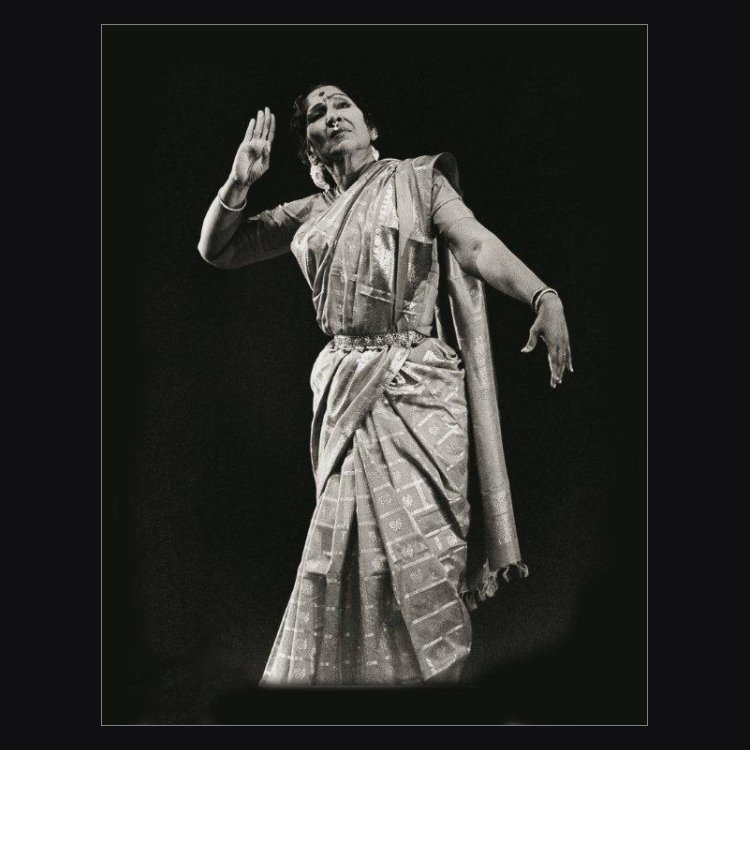
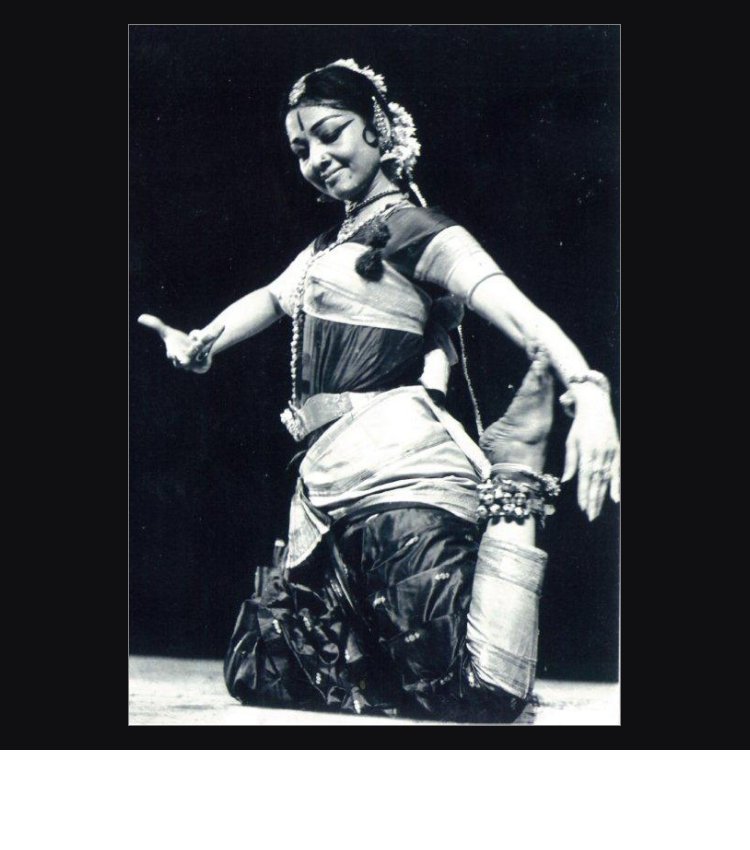
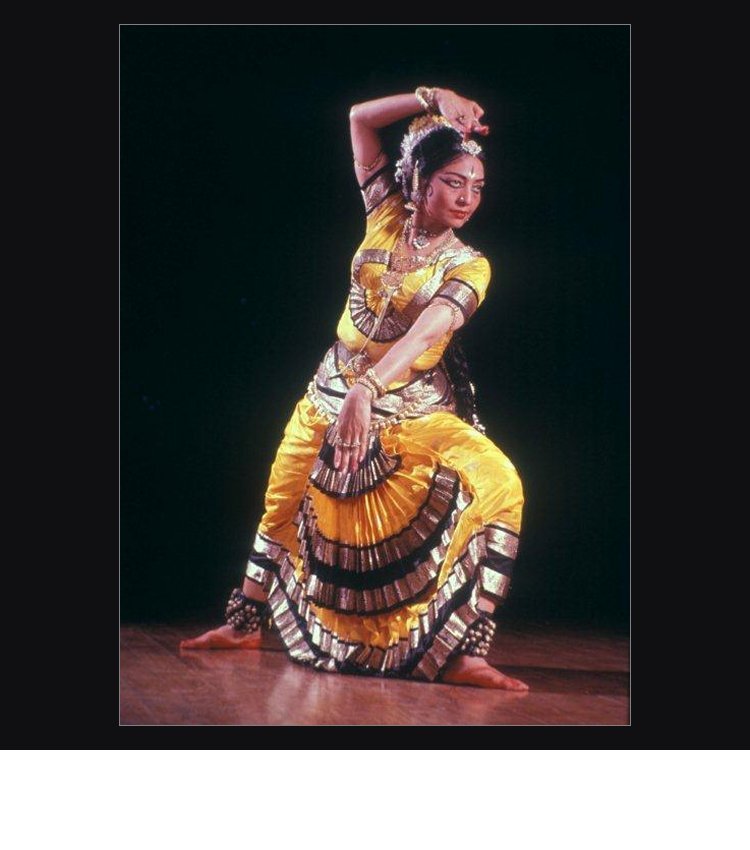
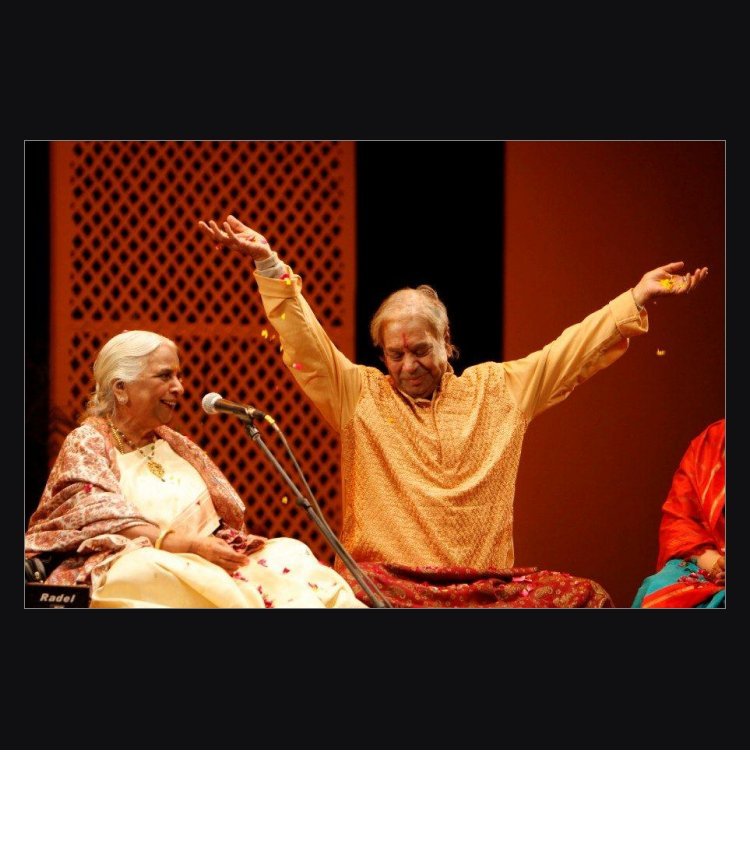
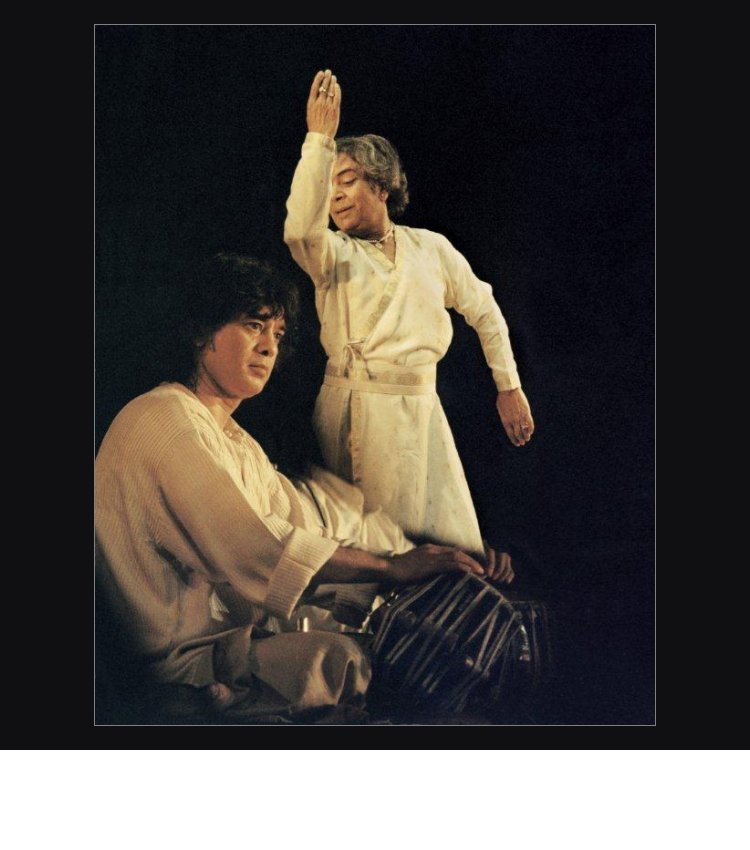

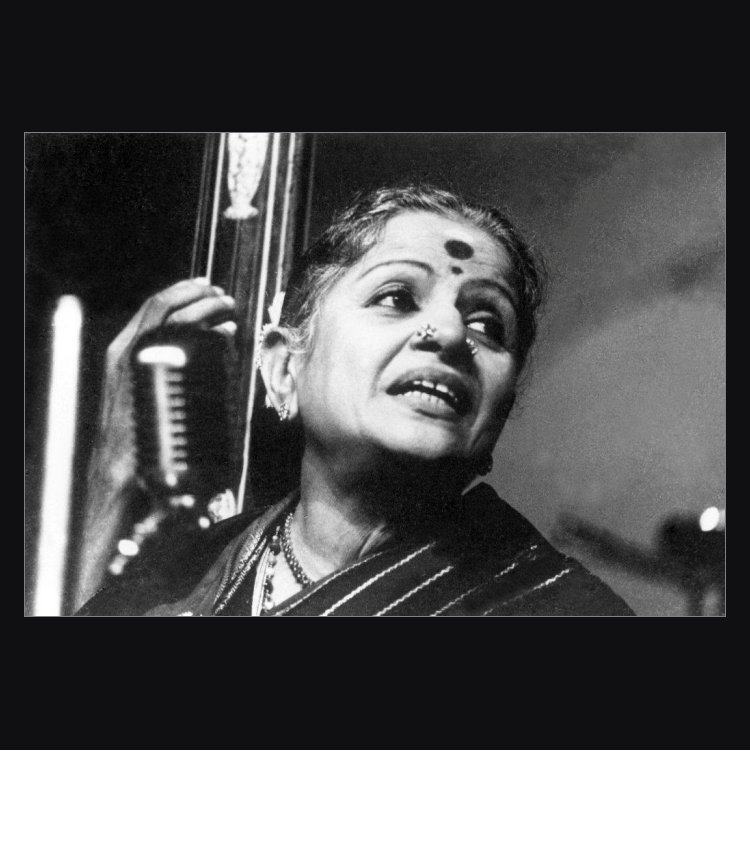
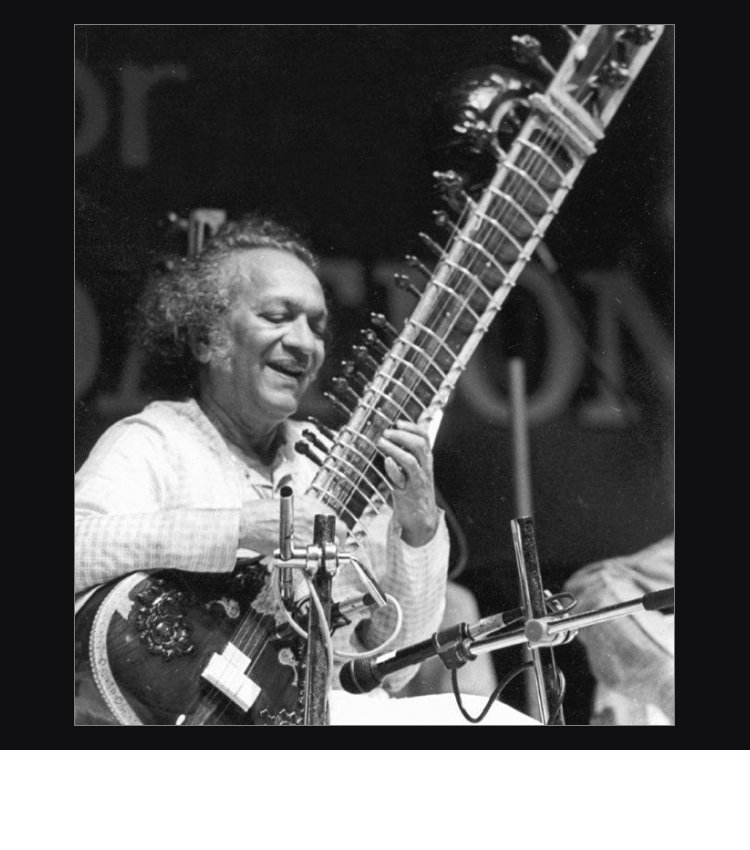
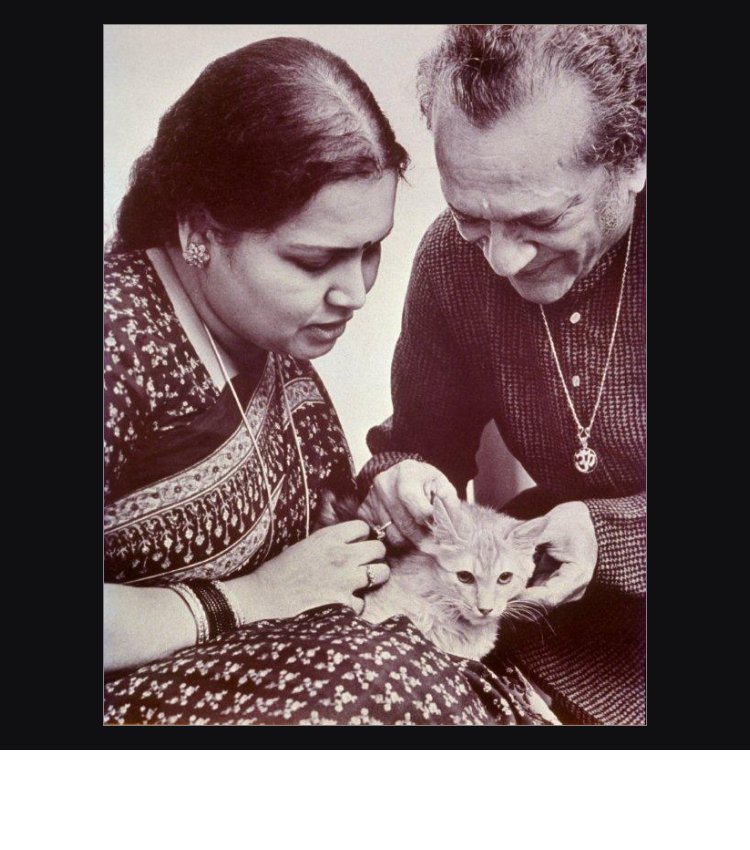
On the final day, renowned photographer Avinash Pasricha spoke about his 50 year career as a photographer, specializing in music and dance photography. He displayed without any comment few memorable photographs of musicians and dancers which as he rightly said speak more than a thousand words. In particular, those of MS Subbulakshmi, Pandit Ravi Shankar, Kumar Gandharva, Bhimsen Joshi, Mallikarjun Mansoor, dancers Kelucharan Mohapatra, Birju Maharaj, Uma Sharma, Balasaraswati, Yamini Krishnamurty, Sanjukta Panigrahi, Geetanjali Lal, Saswati Sen, are in a class apart. The black and white photos of Indrani Rahaman with which he started photographing dance photographs for Span magazine where he was a photo editor for several years are quite historic. There are hardly any dancers whom Avinash has not photographed during the past half a century. His ability to capture the movement and expressions is praiseworthy. He regretted that because of the limited time he was not able to show several dancers whom he has photographed. Photos of Sonal Mansingh, Geeta Chandran, Rama Vaidyanathan, Jayarama Rao and Vanashree, Sudharani Raghupathy, Madhavi Mudgal, Leela Samson, Valli, Malavika Sarukkai, Anita Ratnam and young generation dancers including Arushi Mudgal, several dancers, was literally a feast for the eyes. Avinash has photographed specially during the field work of Odissi, Kuchipudi, Sattriya dances for my books on dance and as co-authors we have created visually attractive and scholarly books. His receiving SNA Award has been welcomed by the dance world with due appreciation.
Avinash and I had to share the time, as on previous evening on account of electricity failure my Down Memory Lane conversation with Geeta Chandran was postponed. With the help of photographs of my more than twenty books on dance including Chhau dances of India, Bharatanatyam, Kathak, Odissi, Kuchipudi, New Directions in Indian Dance, photo biographies of Uday Shankar, Rukmini Devi, Damaru, Rasa, Dance in Retrospect, edited papers of 1958 All India Dance seminar, Sattriya Dances of Assam and few Gujarati books, Geeta Chandran traced my career as a dance scholar, author and researcher. With few select photographs we spoke of my interactions with great performers like Balasaraswati, Rukmini Devi, Mrinalini Sarabhai, Kumudini Lakhia, Chandralekha, Kelubabu, Kalanidhi Narayanan, Yamini Krishnamurty, several gurus and scholars and about series of lecture demonstrations I had organized for ten years in Mumbai by gurus like Kelucharan Mohapatra, Vempati Chinna Satyam, Bipin Singh, Lachhu Maharaj, Krishna Panicker, Mrinalini Sarabhai, Sanjukta Panigrahi and disciples of gurus which made several dance forms popular among the urban city audiences. We spoke of erudite, responsible editors and state of dance criticism of earlier times and the present plight. I have been active on the dance scene for sixty years and have enjoyed working, writing, researching on dance. Dance criticism also forms an important part of that activity. I consider myself fortunate for having worked with great artists and scholars like Dr. Kapila Vatsyayan, Dr. V. Raghavan, Prof. Mohan Khokar, among dancers Manipuri exponents Jhaveri sisters and others. Since I am currently writing my autobiography I shall cover dance history from 1956, many incidents and interactions, major historical events, working as an Assistant Secretary for Dance for two years, and my career as a Professor and Dean teaching at Rabindra Bharati University, School of Arts and Aesthetics at JNU and as Fulbright Professor at University of New York. The awardees' festival on account of various reasons did not have that polish and right venue. I would suggest that SNA from now on take stock of what went wrong this time and plan things well in advance. More pics  Dr. Sunil Kothari is a dance historian, scholar, author and critic, Padma Shri awardee and fellow, Sangeet Natak Akademi. Dance Critics' Association, New York, has honoured him with Lifetime Achievement award. Post your comments Please provide your name and email id when you use the Anonymous profile in the blog to post a comment. All appropriate comments posted with name & email id in the blog will also be featured in the site. |